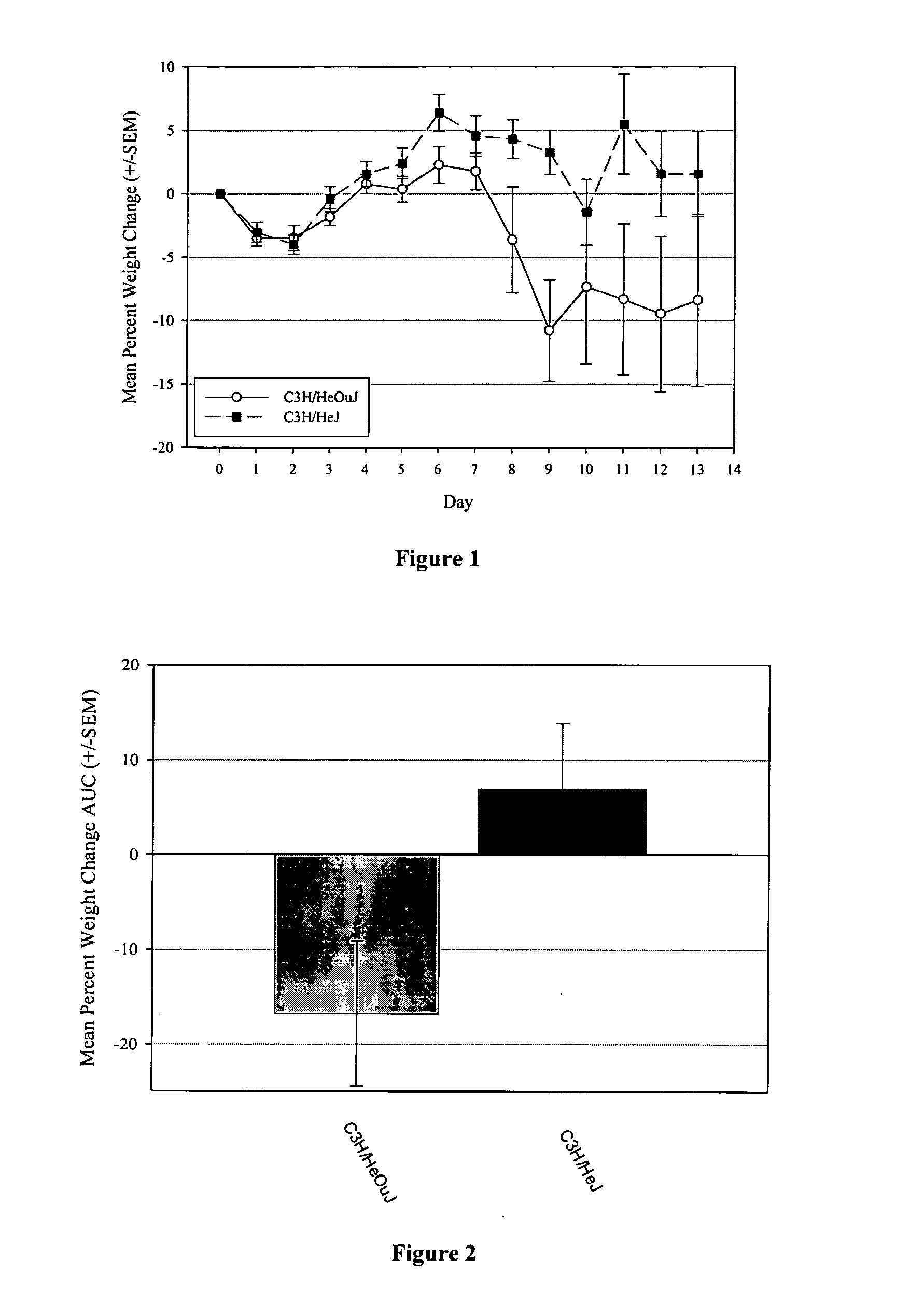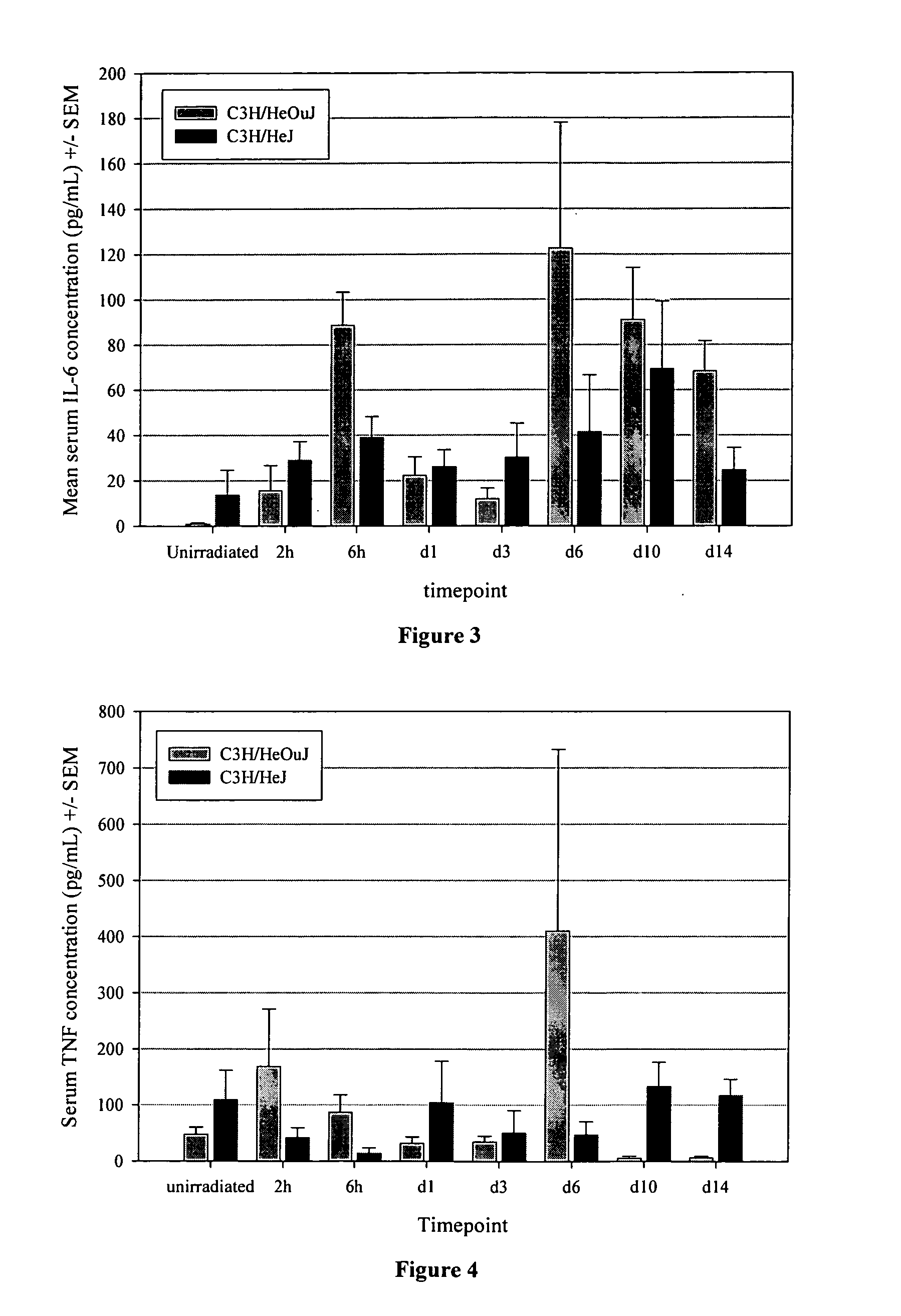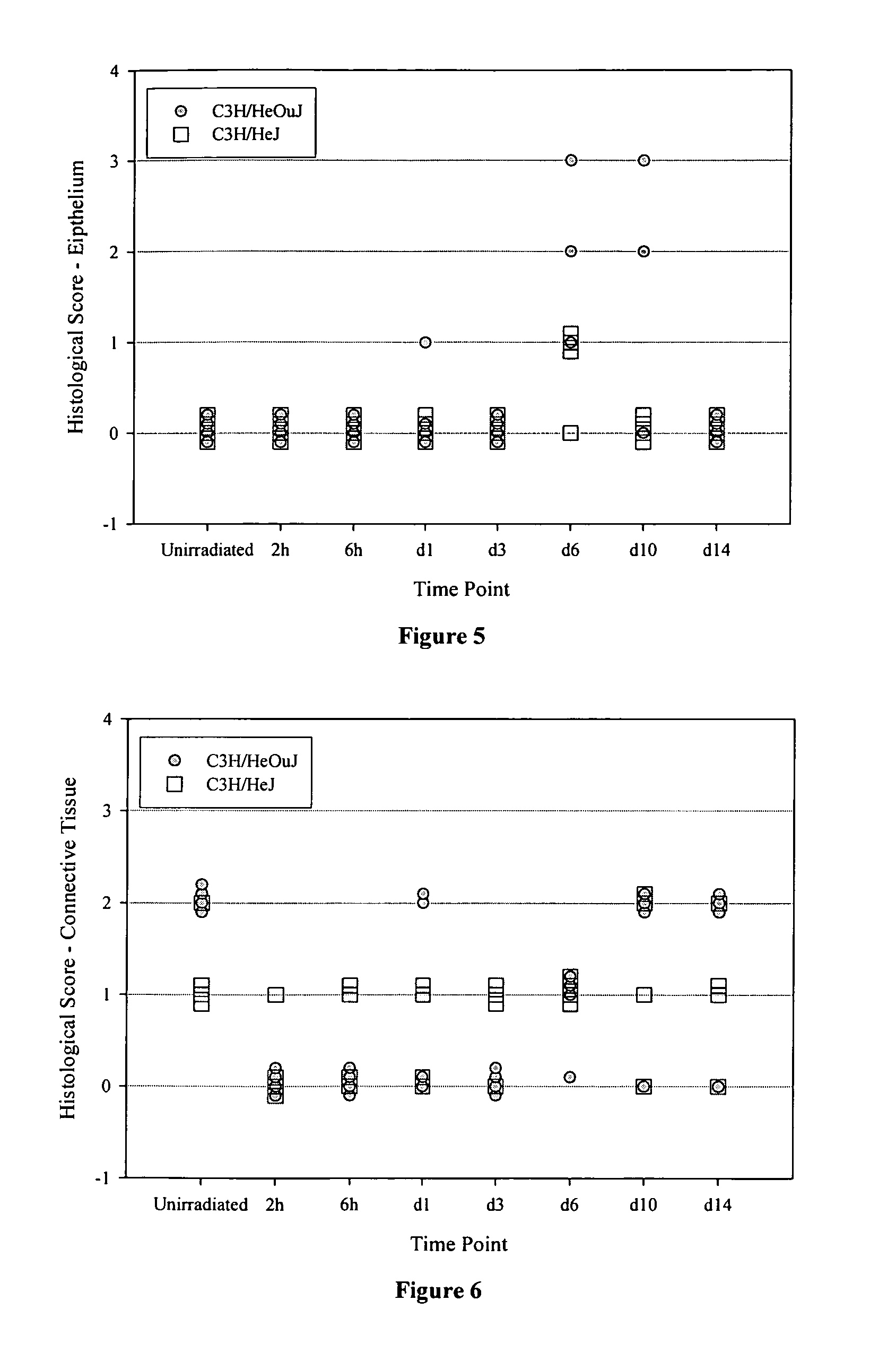Methods of reducing the severity of mucositis
- Summary
- Abstract
- Description
- Claims
- Application Information
AI Technical Summary
Benefits of technology
Problems solved by technology
Method used
Image
Examples
example i
1. Introduction
1. 1 Rationale
[0081] Two strains of C3H mice (C3H / HeJ and C3H / HeOuJ) differ from one another by the presence or absence of the LPS receptor TLR4 (present in the C3H / HeOuJ strain). C3H / HeJ mice are more sensitive to the lethal effects of total body radiation, but do not develop oral mucositis to the same extent as do the C3H / HeOuJ mice after a localized acute radiation to the snout. The mechanistic basis for these differences is not understood.
1.2 Acute Snout Radiation Model
[0082] The acute mouse snout radiation model in mice has been used to determine the radioprotective properties of experimental compounds. The course of oral mucositis in this model is well defined and results in peak mucositis 10-12 days following radiation. The acute model has little systemic toxicity, resulting in few radiation-induced animal deaths. In the present study, we used a dose of 30 Gy to induce oral mucositis.
2. Study Objective and Summary
2.1 Study Objective
[0083] The object...
example ii
1. Introduction
1.1 Rationale
[0115] As noted above in Example I, two strains of C3H mice (C3H / HeJ and C3H / HeOuJ) differ from one another by the presence or absence of the LPS receptor TLR4 (present in the C3H / HeOuJ strain). In the experiments described above, it is established that the C3H / HeOuJ strain is susceptible to oral mucositis induced by focal radiation to the snout, while the C3H / HeJ strain is relatively resistant to radiation induced mucositis. Evaluation of the pro-inflammatory cytokines in these animals showed that the induction of these cytokines via the LPS receptor TLR4 in the C3H / HeOuJ mice may play a role in the development of oral mucositis. The purpose of the study described below was to evaluate a compound that blocks stimulation of TLR4 (eritoran) in the murine model of oral mucositis.
1.2 Acute Snout Radiation Model
[0116] The acute mouse snout radiation model in mice has been used to determine the radio-protective properties of experimental compounds. The ...
example iii
1. Introduction
1.1 Rationale
[0138] As discussed above, two strains of C3H mice (C3H / HeJ and C3H / HeOuJ) differ from one another by the presence or absence of the LPS receptor TLR4 (present in the C3H / HeOuJ strain), and the C3H / HeOuJ strain are susceptible to oral mucositis induced by focal radiation to the snout, while the C3H / HeJ strain are relatively resistant to radiation induced mucositis. Further as described above, evaluation of the pro-inflammatory cytokines in these animals shows that the induction of these cytokines via the LPS receptor (TLR4) in the C3H / HeOuJ mice may play a role in the development of oral mucositis. The experiments described in Example II demonstrated the efficacy of eritoran in a model of oral mucositis. The study described below identifies optimal dosing schedules for eritoran.
1.2 Acute Snout Radiation Model
[0139] The acute mouse snout radiation model has been used to determine the radio-protective properties of experimental compounds. The course ...
PUM
| Property | Measurement | Unit |
|---|---|---|
| Structure | aaaaa | aaaaa |
Abstract
Description
Claims
Application Information
 Login to View More
Login to View More - R&D
- Intellectual Property
- Life Sciences
- Materials
- Tech Scout
- Unparalleled Data Quality
- Higher Quality Content
- 60% Fewer Hallucinations
Browse by: Latest US Patents, China's latest patents, Technical Efficacy Thesaurus, Application Domain, Technology Topic, Popular Technical Reports.
© 2025 PatSnap. All rights reserved.Legal|Privacy policy|Modern Slavery Act Transparency Statement|Sitemap|About US| Contact US: help@patsnap.com



